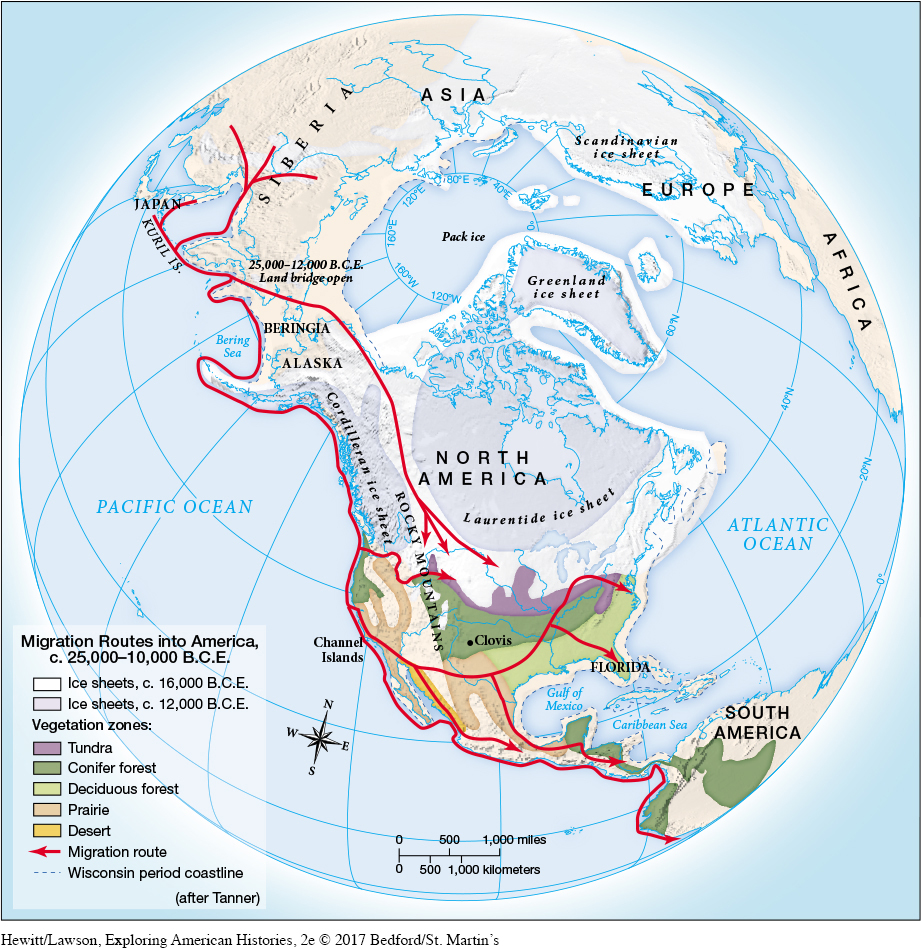Native Peoples Develop Diverse Cultures
The settlement of the Americas was encouraged by the growth of glaciers on the North American continent between about 38,000 and 14,000 B.C.E. This development led to a dramatic drop in sea levels and created a land bridge in the Bering Strait, between present-day Siberia and Alaska. The first migrations may have occurred about 25,000 years ago, during a warming trend when melting glaciers retreated from large areas of land. During the warming trend, some settlers probably traveled from northeast Asia to present-day Alaska over a land bridge, called Beringia, following herds of mammoths, musk oxen, and woolly rhinoceroses inland. But some 13,000 years ago immense expanses of ice returned to many regions, shifting the routes that migrants could follow. In both periods, some people likely journeyed along the coastline, taking advantage of rich maritime resources. These coastal journeys may help explain how Asiatic migrants peopled vast areas of South America in just a few thousand years.
Whether over land or sea, most early groups traveled southward. Those moving inland had to skirt melting glaciers to find better hunting grounds and more abundant plant life. When the mammoths and other large game disappeared from large areas about 10,000 years ago, people became more dependent on smaller game, fish, roots, berries, and other plant foods to survive. At the same time, new migrations likely continued across the Bering Strait, with Inuit and Aleut peoples arriving in present-day Alaska thousands of years after more southern areas had been settled (Map 1.1).

Between 8000 and 2000 B.C.E., some communities in the Americas began establishing agricultural systems that encouraged more stable settlements and population growth. Horticulture—a form of agriculture in which people work small plots of land with simple tools—became highly developed in the area of present-day Mexico. There men and women developed improved strains of maize (or Indian corn). They also cultivated protein-rich beans, squash, tomatoes, potatoes, and manioc (a root vegetable). The combination of beans, squash, and corn offered an especially nutritious diet while maintaining the fertility of the soil. Moreover, high yields produced surplus food that could be stored or traded to neighboring communities.
By 500 C.E., complex societies, rooted in intensive agriculture, began to thrive in the equatorial region. Between 500 and 1500 C.E., thousands of separate societies and cultures were established in the Americas. Small bands of hunters and gatherers continued to thrive in deserts and forests while impressive civilizations arose on swamplands and in the mountains.
Exploring American HistoriesPrinted Page 4
Exploring American Histories Value EditionPrinted Page 3
Chapter Timeline